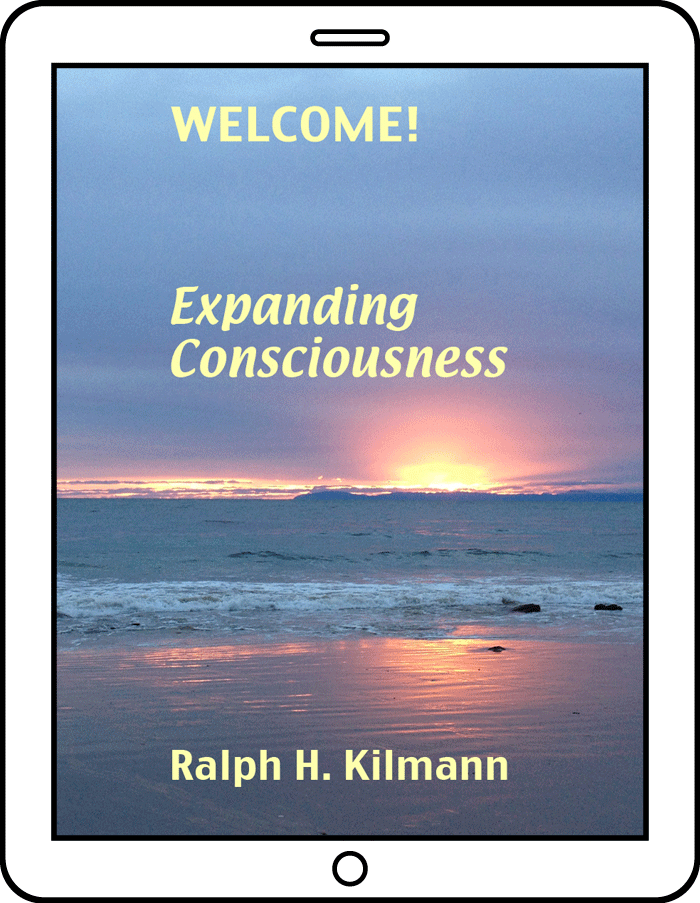
How to combine this online course with live discussions
The members of the same work group (whether a department, task force, project group, cross-functional team, or process improvement team) will gain extra benefits from taking any of our online courses AS A GROUP. Rather than members of an organization taking our online courses separately and thus independently, learning key principles and practices with your workplace colleagues will not only enhance what every member learns from our online courses, but will also make it much easier to apply what is learned back on the job—where it counts.
Basically, when all group members (1) learn the same language and the same concepts, (2) review the same assessment tools and their personalized results, (3) analyze and discuss the same business cases, and (4) follow the same guidelines for effective behavior—BECAUSE all these principles are fully shared in the group, they are more likely to be put into practice when challenging problems and conflicts appear in the workplace.
On this page, I outline how a work group can take full advantage of all the valuable materials in the Expanding Consciousness Course. The unnumbered paragraphs describe what members are asked to do on their own, such as watch the course videos, take assessment tools, or complete work sheets in their course manual. Meanwhile, the numbered paragraphs provide the detailed steps for learning the material through face-to-face or virtual group meetings. Depending on the unique circumstances and needs of each group, this process for blended learning can be adjusted or expanded.
THE DETAILED STEPS
All members—on their own—watch the first few video sections in the course, which covers pages 1 to 20 in the Course Manual for Expanding Consciousness. In a sixty-minute meeting, members address these numbered paragraphs:
1. As a group, members share their understanding of the Complex Hologram and how this “big picture” captures the surrounding systems and processes that powerfully shape individual behavior in an organization. Can they change and improve one aspect of an organization without affecting (or being constrained by) all the other aspects? What is the significance of presenting the Complex Hologram in context of the swirling quantum waves and particles that make up all forces and forms?
2. The members should then review their understanding of the five conflict modes, as defined by the two underlying dimensions: assertiveness and cooperativeness. If members have previously taken the TKI assessment, they might share what they learned about themselves: which conflict modes they might be using too much or too little (based on the TKI’s normative sample). The members should also review their understanding of the three diagonals on the TKI Conflict Model, which provide deeper insights into the workings of conflict management: the protective, distributive, and integrative dimensions.
3. Group members should then consider the impact of high stress on their choice of conflict modes, especially since the total space of the five modes, under high stress, shrinks to these three reactions: fight, flight, and freeze. Besides these defensive reactions, there is little opportunity for compromising, let alone collaborating. Members should try to provide examples of how they have previously reacted to conflict situations when they and others were in highly stressful situations.
4. Members next discuss their knowledge of the different revolutions that have occurred in the past and, in particular, what exactly constitutes a revolution. If some members have previously taken the Quantum Transformation Course, they might consider how a revolution is the same or different from a paradigm shift. Members should then consider how often a revolution takes place and why revolutions seem to be occurring more frequently than ever before. And most importantly, what is their understanding of the consciousness revolution and why the information revolution undoubtedly provided the necessary foundation for consciousness to expand across the planet?
5. Group members can share their understanding of mind/body/spirit consciousness and why a sequence (much like the eight tracks) is more efficient in the long run than piecemeal or out-of-sequence attempts to expand consciousness. Do members see how the systems in organization can either support or thwart their efforts at self-discovery?
On their own, members watch the next three video sections, which correspond to pages 21 to 53 in the manual. Then, in a sixty-minute meeting, members discuss these numbered paragraphs:
6. Members are invited to share their personal experiences with actively participating in various mind/body/spirit modalities, whether listed on the slides (pages 23 to 25) or other such modalities for expanding consciousness. In most cases, members discover that they have explored self-understanding in their personal lives, but have rarely, if ever, discussed these “outside” or “personal” experiences with their workplace colleagues.
7. Group members then discuss how talk therapy (any form of psychotherapy for mind consciousness) is fundamentally different from experiencing the energy flows in their body, let alone their transpersonal connections with the universe outside their mind and body. Often times, discussing the differences between reading self-help books or psychotherapy and what might be experienced with Holotropic Breathwork (as defined, illustrated, and described on pages 27 to 30) are helpful in distinguishing mind modalities from body or spirit modalities.
8. Members now have the background to discuss their understanding of the various stage models of consciousness on pages 31 to 42 in the manual: How are the four models (Wilber’s, Hawkins’, Epstein’s, and the chakra system) similar and different? How do these models complement one another? Do members “prefer” one model to the others, regarding the ease of becoming more aware of their own stage of consciousness and what the next—higher—stages would be like?
9. Group members should discuss what their organization (and group) would be like if they could all expand to a higher stage of consciousness—in terms of how conflict and change would be experienced and managed. Members should try to present examples of how various conflicts and interactions were approached at the lower, middle, and higher stages of consciousness—so everyone is clear how life in the organization is affected by what stage of consciousness is being radiated and expressed.
10. Members can now discuss how the different stages of consciousness map onto the TKI Conflict Model, thus showing their similarity and overlap. Do members see how the lower stages correspond to the protective dimension, the middle stages reflect the dynamics along the distributive dimension, and the higher stages are relevant to the integrative dimension? Members can be encouraged to provide additional examples of how the stages/energies/emotions of consciousness propel people to address conflict on one diagonal dimension or another.
11. Group members should now explore the meaning of temporal and spatial boundaries, and why these boundaries are so important—and sacred. Members can be asked to provide examples of how the different spatial boundaries can be violated and how the different temporal boundaries determine if people can have a healthy relationship with the present, or be stuck in the past, or be oblivious to the future consequences of their present behavior. Do members recognize the two-way exchange of energy and information across all their temporal and spatial boundaries?
12. Members can now consider what happens during an interaction when people (such as themselves) are radiating different energies/emotions, particularly at the lower, middle, and higher stages of consciousness? Can members give examples of when one person’s higher energies can have a dramatic impact on those who might be stuck at a lower stage of consciousness? What would it be like if more members in the group (or organization or society) could radiate at a higher stage of consciousness?
On their own, group members view the next four video sections of the course on (pages 54 to 89 in the manual), which cover the four foundational conflicts that emerge during the self-exploration of mind/body/spirit consciousness. Then, in a ninety-minute meeting (making sure to maintain a relaxed—non-stressful—atmosphere at all times), members discuss these numbered paragraphs:
13. Group members should share their understanding of the first foundational conflict: Are you a physical body or an energy body? For example, do members realize how either extreme might restrict their choices for health, happiness, and success? They can then discuss how (a) avoiding the physical/energy conflict on the protective dimension (at home and at work) will prevent them from resolving this conflict altogether; (b) choosing either a physical or an energy body on the distributive dimension could offer them a temporary solution, but certainly not a long-term—fully resourceful—solution; and (c) finding a creative way to experience themselves as both a physical body and an energy body will likely lead to the best of all worlds—short term and long term. Members should be encouraged to share what mind/body/spirit modalities have already helped them resolve this foundational conflict and why bringing this dialogue directly into their organization will empower everyone with greater choices, creativity, passion, meaning, and success.
14. Members now consider the second foundational conflict: Are they governed by their ego or their soul? Members should share their written statements of (a) what their ego most wants from them and (b) what their soul requires them to do, based on the instructions given on page 64 in the manual. As in the prior step, members should next examine how approaching their ego/soul conflicts on the protective, distributive, and integrative dimensions will yield different experiences and outcomes for themselves and their organization. In addition, they should discuss how gradually raising their stage of consciousness (via such group discussions, as supported by mind/body/spirit modalities) will make it much easier to move their ego-soul conflicts from the protective to the distributive and, ultimately, to the integrative dimension.
15. Group members next discuss the third foundational conflict: Is their self (as their ego and/or their soul) separate from their surrounding systems (culture, strategy, structure, rewards, the group, leadership, and the influence of external stakeholders)? Or are these systems, in fact, an important aspect of their inner self? Using the TKI Conflict model and the three diagonals, in a non-stressful atmosphere, members should examine how the different ways of addressing their self/systems conflicts will lead to vastly different outcomes for themselves and their organization—thus illustrating how different stages of consciousness allow everyone to approach such conflicts on each of the three diagonal dimensions.
16. Members now explore the last of the four foundational conflicts: Have they resolved their primal relationships—or not? Although such a discussion is not meant to be individual or group psychotherapy (which can only be done with a licensed therapist external to the work group), members can nevertheless be invited to share whether their primal relationships (parents, guardians, siblings, relatives, neighbors, strangers, classmates, etc.) have previously wounded their temporal and/or spatial boundaries and in what manner these unresolved relationships might still be sabotaging their current focus, energy, passion, and potential. Members should discuss the “Nine Stages for Resolving Primal Relationships” (pages 80 and 81 in the manual) in order to provide examples of what allows people to successfully resolve and heal their wounded boundaries, including what next steps might initiate a healing process that has been avoided for years…or even decades. Although members can be invited to share their experiences in resolving their primal relationships, no one should feel pressured (especially in a relaxed, non-stressful setting) to share or participate in this discussion in any way. Most times, however, given the recent examination of the three previous foundational conflicts, a few members will initiate a sharing process that helps everyone open up and discuss how unresolved relationships robs them of being fully human in the present moment. As before, the TKI Conflict Model should be used to suggest how the truth of what happened between two people in the past can be differentially addressed on each of the three diagonal dimensions. Lastly, members should explore the meaning and purpose of “addiction” (pages 88 and 89), just to be sure they don’t unconsciously fall into such a harmful trap.
On their own, group members view the next video section, which carries the name of the course: Expanding Consciousness in People and Organizations (pages 90 to 109 in the manual). Then, in a ninety-minute meeting, members address these numbered paragraphs:
17. Group members should discuss how the sequence of eight tracks affects every aspect of the Complex Hologram (the Big Picture), including self-aware consciousness. Do members understand the relationships among the first three tracks, the middle two tracks, and the last three tracks? More specifically, what is the rationale for first establishing quantum infrastructures before proceeding with improvements in the formal systems? And why is it important to then improve the work processes that flow within and across the informal and formal systems? Looking at the slides on pages 93 to 95 in the manual, members should discuss how each set of tracks augments the self-aware consciousness of all members in the organization.
18. Members should next consider how the striking polarity of a Newtonian—Pyramid—Organization versus a Quantum-Circle—Organization will lead to different systems for members, depending on whether they approach that polarity on the protective, distributive, or the integrative dimension. Specifically, members should discuss how a solution to this polarity on the distributive dimension (using the combining mode) is very different from a systems solution that’s developed on the integrative dimension (using the synergizing mode). Regarding the latter, the members should discuss their understanding of the Problem Management Organization (PMO), since that synergized solution provides the best means possible for not only further expanding their consciousness, but making sure that their expanded consciousness is effectively utilized in the workplace, 24/7.
19. Members should carefully examine how their resolutions for each of the four foundational conflicts would enable them to establish a fully-functioning PMO that allows team members to connect with the Holographic Universe, as needed. At this time, members can also discuss how resolving their foundational conflicts on the integrative dimension would enable them to make better use of the PMO than if they’d addressed their inner conflicts on the distributive dimension. Members should make sure that they fully understand how implementing the first three tracks of the eight-track program, in sequence, would enable them to create the necessary conditions for fully incorporating the PMO into their expanded self-identity, which would include their resolution of their ego’s desires and their soul’s purpose, all within an integrated physical/energy body.
20. Lastly, the group should consider why at least one of its member should eventually become “a leader in expanded consciousness” and what impact such informal leadership would have on the subsequent functioning of the group, as it addresses its most important problems and conflicts.
On their own, group members can take the optional Final Exam for Expanding Consciousness, by clicking the link on the video page, under the heading: 6. Taking the Exam. Although Kilmann Diagnostics does not award a “certificate of achievement” for this course, receiving a score of 88 or more points (out of 100 possible points on twenty-five, multiple-choice questions) signifies that members have passed the exam and have thus learned the material.
NOTE: The optional Final Exam for every course can be taken as many as five times, since its purpose is to encourage members to learn the material—not to add stress to their life. However, if someone else purchased these courses for the group, the sponsor (for example, the employer) might require group members to pass each exam as an indication that they’ve learned the material. But Kilmann Diagnostics will not share any exam results if a member happens to score less than 88 points on any occasion for any course. We’ll only inform the sponsor when members pass their exams. Click to see Sample Questions on Each Final Exam.




